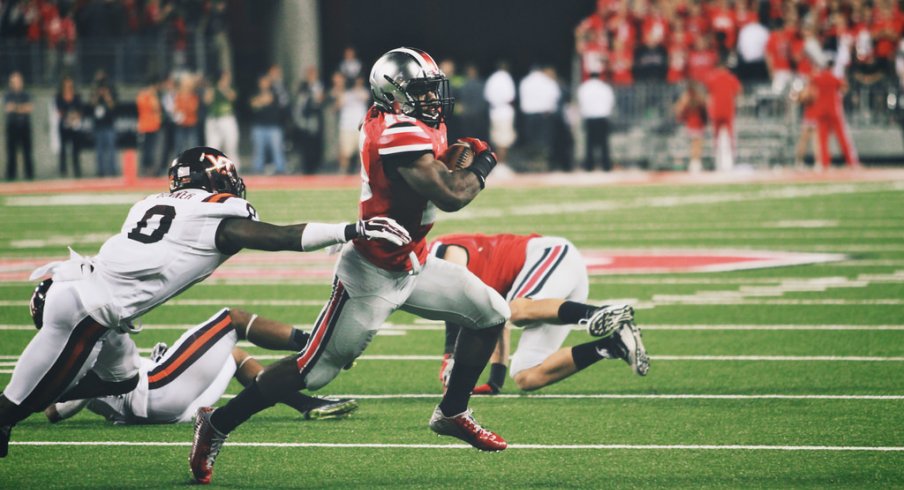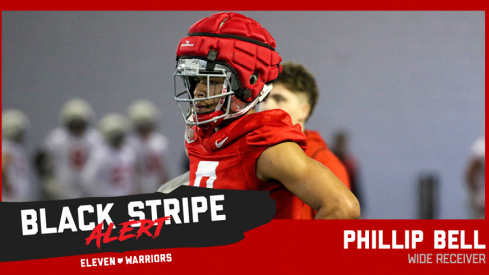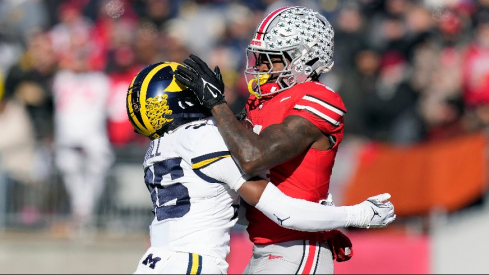Long known for their 4-2-5 defense, Virginia Tech surprised Ohio State in their visit to the Horseshoe last September by coming out in what was effectively a five-man front and causing problems for the Buckeye offense all night. While the alignment of so many big bodies inside was often credited as being the difference-maker that evening, no other teams proved capable of copying the Hokies' success.
Make no mistake, every Buckeye opponent that followed looked at what Hokie defensive coordinator Bud Foster accomplished and did their best to copy, placing three defensive linemen over the OSU center and guards in what's known as a "Bear" look. But as we all know, few teams found anywhere near the same success in their approaches, as OSU would go on to win 13 straight games.
The entire Buckeye offensive coaching staff certainly deserves credit, especially coordinators Tom Herman and Ed Warinner, for diversifying their running attack to incorporate schemes that exploit such an alignment. But as we look forward to this coming September and the rematch with Virginia Tech on their home turf, the OSU staff can't assume they already have the answers for Foster's aggressive version of the Bear.
Foster's approach is more than just an alignment, as the long-time play-caller in Blacksburg has implemented his scheme across his entire unit, not just up front. Though the philosophy was vindicated early on with the win in Columbus, Foster's Bear defense was used against a number of opponents last year by design.
With the success of "Power Spread" schemes like Ohio State's, which evolved from the one-back offenses of Dennis Erickson in the 1980s, many successful college football offenses look similar to what Urban Meyer has long implemented. These teams are able to stretch defenses horizontally with their spread formations, while still finding success running the ball. For the Hokies, the addition of OSU to the schedule meant they'd face this kind of offense at least three times in 2014, as the Buckeyes would offer a similar schematic challenge to that of ACC foes Boston College and Duke.
Meyer has long believed in this approach, as it gives his team the ability to beat nearly any team inside with combination blocks, while still attacking the edges with the threat of a quarterback run. To eliminate both factors, Foster moved bodies forward at every level, putting his cornerbacks on islands to the outside in solo, man-to-man coverage, allowing his safeties to attack any quarterback runs in the alleys.
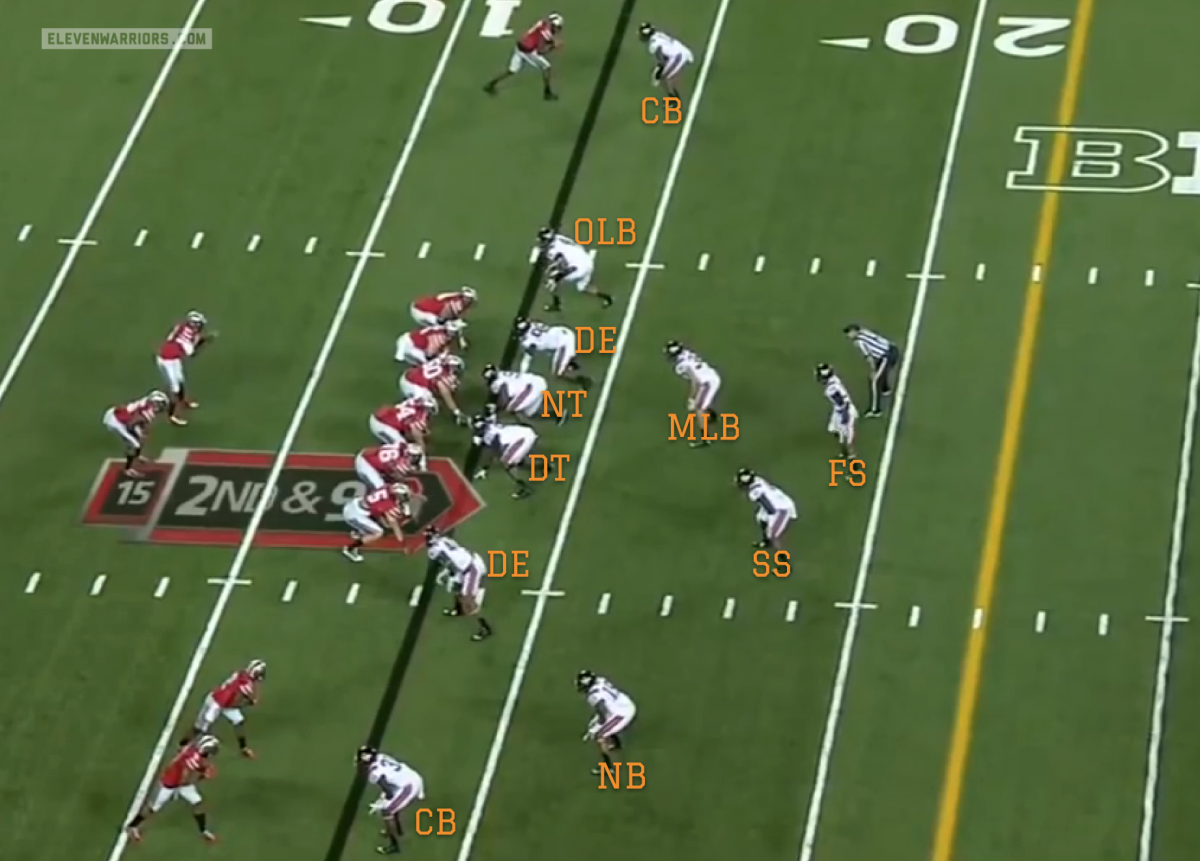
Foster did so with his traditional 4-2-5 personnel on the field, sometimes even lining up in their base look before bumping down to the Bear. All it requires is a shift in the outside linebacker down to stand-up defensive end position, and bumping that end inside over the guard.
If the offense aligned with four receivers split out wide, the strong safety (called a Rover in Foster's scheme) walks out over the fourth receiver or tight end, but the free safety remains inside, almost like a second inside linebacker. The safeties are the most important piece of Foster's approach here, as they often became the all-important "free hitter" when the ball is snapped.
One of the most basic philosophies of option football is to gain a numerical advantage on the defense, as the quarterback becomes a threat to run the ball behind the blocking of five linemen and perhaps a tight end or running back. Traditionally, that meant the front seven players on defense (four linemen and three linebackers) would be one man short, and as long as each blocker on offense made their block, no one would be left to tackle the ball-carrier.
Against spread formations with three or four wide receivers, teams couldn't simply counter this action by bringing an additional defensive back into the box to help negate this advantage, as it left an open receiver. The one place a defense never seemed willing to look for this defender though was at the free safety spot, a long-time sacred cow to many coordinators.
Without at least one deep safety, defenses are forced to play man-to-man coverage in the passing game, which not only means those defensive backs have no help if they screw up, but that the offense also usually knows that it's coming before the ball is snapped. However Foster has long taught this 'Cover 0" man coverage to his secondary, allowing him the freedom to experiment with bringing the free safety into the box, a tactic that paid off against the Buckeyes.
As OSU came out with their base run game, built around tight zone and power-read, the Hokies consistently had the numerical advantage with eight or nine Hokies in the box. Specifically, Foster doubled down on this aggressive style when OSU brought their "H" receiver in motion to the backfield, looking to get Dontre Wilson or Jalin Marshall the ball on an outside handoff.
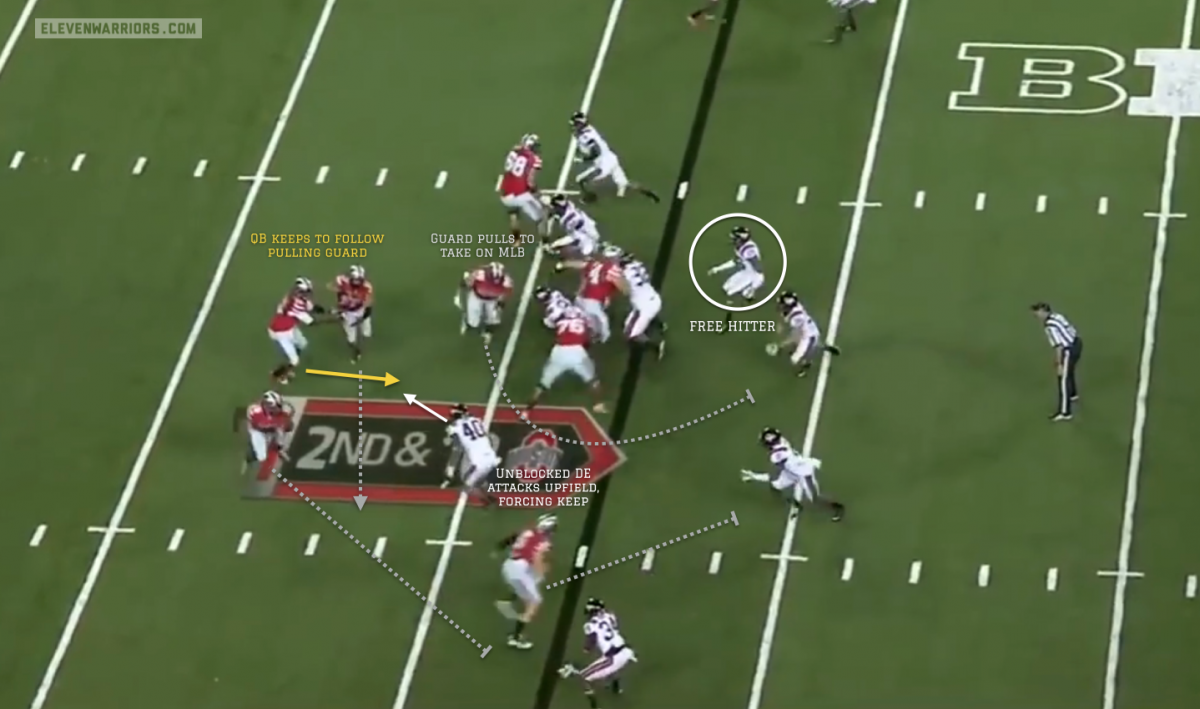
As Marshall motions to the backfield, the trio of the Nickel, and both safeties simply rotate over, with the strong safety becoming the new nickel to the opposite side, waiting to make a play on the outside handoff while the remaining inside players aligned in what effectively became a 5-3 look to the offense. The effort is bolstered by the defensive line, who all slant hard through their gaps, looking to disrupt any backfield action.
The left end (#40, an OLB), who is unblocked and left to be read as the option man, doesn't wait for the QB to make his read, instead attacking his mesh point with the running back to force a quick decision. At the same time, the DE that is lined up inside over left guard Pat Elflein is pass rusher Dadi Nicolas (#90), who is much quicker than almost any interior player the Buckeyes would face all year. Nicolas' first step explodes through the gap between Elflein and right tickle Darryl Baldwin collapsing the entire right side of the line.

All these factors allow the Nickel Chuck Clark (#19) to go untouched and clean up on the tackle, barely allowing J.T. Barrett to get back to the line of scrimmage.
With four new starters on the offensive line, a new running back, and a quarterback playing in his first real game action in nearly two years, the Buckeyes weren't exactly heading into the matchup with the same level of experience as their opponent. The game plan was notably limited, meaning there was little room for in-game adjustments.
The Ohio State rushing attack would muster only 108 yards on only 2.7 yards-per-carry that evening, by far their lowest output of the season. This number echoes what the Hokies saw the rest of the year when running this scheme though, as they gave up an average of only 2.9 yards-per-carry when running the Bear, a full yard below their average when running their base defense.
In fact, the only real success the Buckeyes found that night was when the Buckeyes could go one-on-one in the open field with a Hokie defender. Barrett regularly juked and side-stepped even the most athletic Hokies once he was able to get outside, and though he'd only gain 32 yards on eight carries that night, Ezekiel Elliott picked up half of them on his second half touchdown run.
By using the Hokies' aggressive tendencies against H motion against them, OSU evened the numbers to one side by sending Wilson across the formation, and watching the Hokies flip their strength. However, once Barrett made his pitch to Elliott on the speed option, the flowing free safety had to cover quite a bit of ground, allowing the shifty back time to adjust course and throw off the defender's angle.

These one-on-one battles showed how OSU must attack this look in the fall, as the Buckeyes will have the edge in athleticism at nearly every position on the field. However, Foster won't make it easy. As he noted in a recent interview with HamptonRoads.com, Foster expects to see a big dose of Ezekiel Elliott and the Buckeye running game in the rematch.
"...they’re going to run their offense. They ran it with the big kid, they ran their same offense they ran against us in September. The big thing they were able to do, nobody could stop their running back. That’s the one thing that we did was load the box and make them have to beat us throwing the football. But we’ll study them against particularly some looks that we gave them, to see if that’s something that we want to continue with or if we want to change some things up, but I don’t see them changing their offense."
But Foster is giving the Buckeyes a pretty good blueprint of how his defense can be beat as well. As noted before, it's abundantly clear before the snap that his secondary players are left on an island in the passing game.
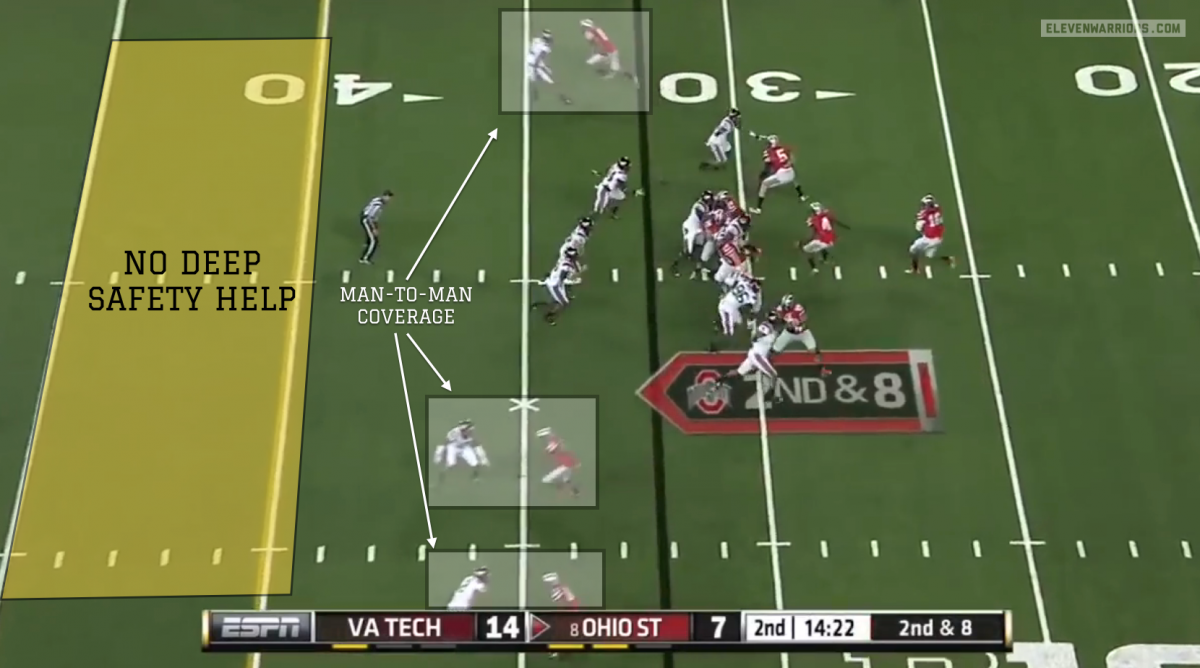
While many fans remember the seemingly endless pressure put on Barrett by Foster's zone blitzes on third downs that night, the Buckeyes were able to find some success through the air. With the corners isolated on the outside receivers, Mike Thomas was able to use his big body to wall off his defender, resulting in six catches, including a long touchdown catch off a slant route.
The Hokie defender never has a chance to make a play on the ball, as Thomas stays between the QB and the corner the entire time, at which point his strength and speed proves too much for the DB to bring down in the open field.

Additionally, Barrett found success by attacking the seams with the slot receiver, hitting Dontre Wilson and Devin Smith for some big gains by simply allowing them to use their speed to get behind the Nickel, who has no free safety help behind him.
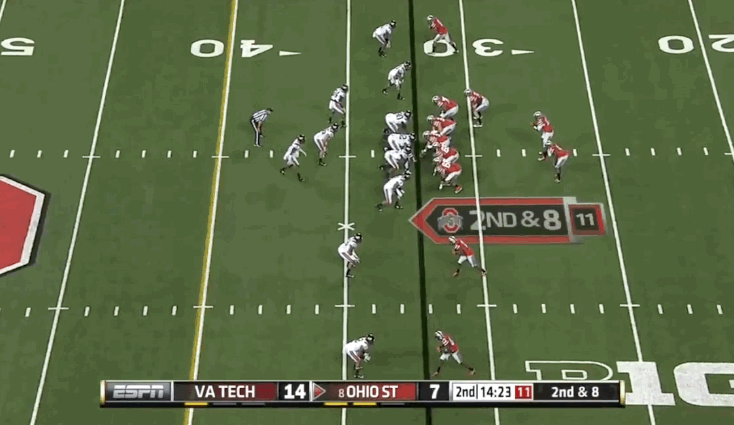
This may explain why the Buckeyes focused so heavily on attacking the deep middle of the field in the spring game, as the best way to remove the extra man in the box is to force Foster to change his coverage in order to take away the deep ball. As that OSU spring game also showed though, that's much easier said than done. Even with a big armed QB like Cardale Jones tossing it around, the Buckeyes lost their best deep threat in Devin Smith, and are relying on Corey Smith and Jalin Marshall to fill some big shoes.
Though they had to face Bear fronts for the duration of 2014, few opponents ran this aggressive "Cover 0" against the Buckeyes, mainly because it's not something that can be taught in one week of practice. For the Hokies, it's become a core piece of their philosophy, much in the same way option football is for the OSU offense.
The simple blocking adjustments that took apart Maryland or even Oregon don't really apply to the Hokies, as their man advantage can't be negated by looping a tackle or attacking a different gap. For the Buckeye offense to succeed in Lane Stadium on September 7th, they'll have to step way outside their comfort zone. Bud Foster certainly isn't stepping out of his.
